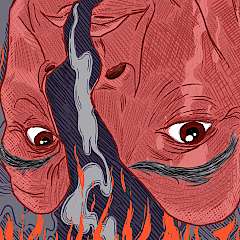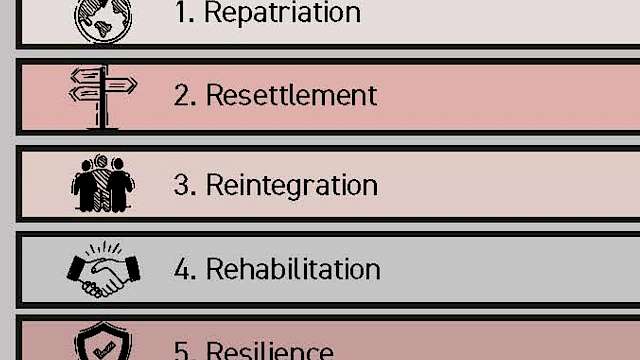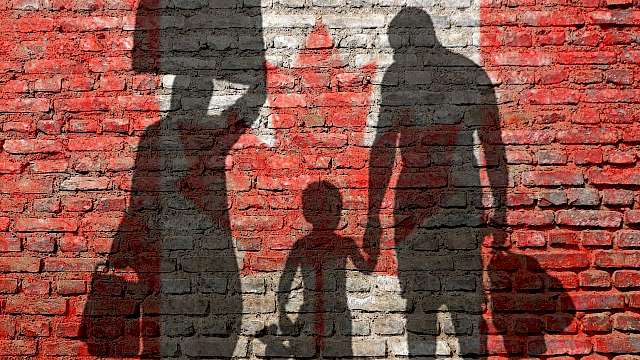Accusations
After the outbreak of the Russo-Ukrainian war in 2014, Ukraine came under a spotlight in relation to extremist organisations and their activities within and outside the country. The Azov movement and the Right Sector, whose members and supporters fought in the war and then moved into politics, looked like ‘strong militias’, which would later challenge the ‘weak state’ (Ukraine). Some even saw the country as a ‘training ground’ for ‘white supremacists’ of the world.
These accusations came to the fore, especially in the aftermath of the 2019 Christchurch mosque shootings in New Zealand, which were erroneously claimed to have been the work of a former foreign fighter from the ranks of the Azov Battalion. The accusations seemed especially prescient at the time when, in the words of Catherine de Bolle (Executive Director of Europol), Christchurch was a part of a “wave of right-wing violent incidents” which were later to reach Europe.
Moreover, worries related to Ukraine were further compounded by the fact that foreign, primarily Western far-right individuals fought in the ranks of its volunteer battalions from 2014 onwards, e.g., Swedish and Croat but also, ironically, Italian, French, Serbian, Czech and Slovak on the so-called ‘separatist’ (pro-Russian) side of the conflict. It was reasoned that such individuals, with military experience from Ukraine and networked in the Western transnational far-right milieu, could consequently return home and, for example, stage terrorist attacks against the hated ‘world order’.
The 2022 Russian invasion of Ukraine only strengthened this concern as some commentators worried that Ukraine’s call for foreign volunteers could further embolden extremists and result in a high number of Western Extremists travelling to the frontlines of the reignited war. Russia carefully stoked these fears with its rhetoric of the need to ‘de-nazify’ Ukraine, with the likes of the Azov movement as the key culprit in this regard.
Reality
More than six months after the 2022 invasion, the above fears appear exaggerated and misplaced. Firstly, low numbers of extremist individuals moved to Ukraine to fight in the war after 24 February 2022. Secondly, the local far-right organisations, which to some appeared like far-right versions of Al-Qaeda, proved disinterested in fostering transnational coalitions of politically violent actors but were intent on building political alliances in Central-Eastern Europe and beyond. These entities are Ukraine-focused and do not perceive external support and assistance from their like-minded brethren in the West as launchpads for transnational terrorism or violent cooperation.
Some commentators worried that Ukraine’s call for foreign volunteers could further embolden extremists and result in a high number of Western Extremists travelling to the frontlines of the reignited war.
This was clearly on display when the Azov movement attempted to recruit foreigners into the ranks of the International Legion. Seemingly, due to their wide contacts in the extremist milieu, one might have expected them to muster dozens, if not hundreds, of wannabe extremist volunteers for Ukraine. In the end, the effort only produced 20-30 recruits, mostly from outside ‘their’ milieu.
In the end, the effort only produced 20-30 recruits, mostly from outside ‘their’ milieu.
As it transpired, the Azov movement was more intent on starting Ukrainian-only volunteer units in different parts of the country, which would then be embedded in the structures of the Ukrainian military, its special forces or even alongside its military intelligence, than in theoretical and far-fetched gains of fostering transnational volunteers for the Ukrainian war effort.
Concerns
Nonetheless, some risks related to the foreign volunteers in Ukraine remain, namely:
- Inadequate initial vetting of the early arrivals allowed some ‘unsavoury’ characters (not essentially extremists but individuals with, for example, criminal histories or unsuitable for military service) to enlist in Ukraine’s International Legion, which distracts from its message of “defend[ing] Ukraine, Europe and the whole world.”
- The emergence of units which challenge the previous dominance of Azov and the Right Sector in the field of recruitment of far-right foreign volunteers, such as Battalions ‘Revenge’ or ‘Brotherhood’. These feature relatively low numbers of individuals but market themselves as ideologically purer alternatives to the aforementioned entities. Their recruitment will consequently further Ukraine’s unfair reputation as an alleged extremist ‘training ground’.
- The ability for like-minded extremists to network on the battlefields of the Russo-Ukrainian war and potentially plan future endeavours together. Worryingly, after 2014 some of the alumni of the war resurfaced in places such as the Yellow Vest protests in France, Iraqi Kurdistan as wannabe foreign fighters, members of private military companies deployed in Africa or the Middle East or coup plotters in Montenegro.
Recommendations
These challenges do not indicate that these extremist foreign fighters and alumni of the Russo-Ukrainian war are plotting the next Christchurch-scale terrorist attacks. However, their ability to enter the conflict zone, potentially find a like-minded unit and then gain skills on the battlefield should be of concern to authorities in the West.
The post-2014 reality of Ukraine and Russia-bound extremist foreign fighters teach us that they, unlike the more numerous and non-radical colleagues in the Ukrainian ranks (dubbed ‘concerned citizens of the world’), are likely to reappear in some of the world’s hotspots while involved in wars, political violence or violent protest.
This potentiality should be a concern to Western security officials who should monitor and disrupt the movement of (veteran) extremist foreign fighters around the globe and deny access to the EU, the United Kingdom and the United States to their Ukrainian or Russian extremist counterparts or in the case of the latter country – sponsors or curators, and seize their assets.
Dr Kacper Rekawek is a postdoctoral fellow at the Center for Research on Extremism (C-Rex) at the University of Oslo and a research associate at the Counter Extremism Project. His book Foreign fighters in Ukraine, The Brown-Red Cocktail will be published by Routledge in January 2023. His work can be followed via Twitter: @KacperRekawek
Read more
Colborne, M. (2022) From the Fires of War: Ukraine’s Azov Movement and the Global Far Right, Berlin: ibidem Press. https://tinyurl.com/4jy7yk9w
Likhachev, V. (2016) “The Far Right in the Conflict between Russia and Ukraine,” Russie.Nei. Visions, 95, ifri Russia/NEI Center. https://tinyurl.com/m77srnnw
Rekawek, K. (2022) Western Extremists and the Russian Invasion of Ukraine in 2022. All Talk But Not a Lot of Walk, New York: Counter Extremist Project. https://tinyurl.com/3ju4wjey
Rekawek, K. (2022) Foreign Fighters in Ukraine. The Brown–Red Cocktail, Abingdon: Routledge, forthcoming. https://tinyurl.com/36nv3mur
Shekhovtsov, A. (2016) The Ukrainian Far Right and the Ukrainian Revolution. New Europe College Black Sea Link Program Yearbook 2014-2015, pp. 215-237. https://tinyurl.com/yjtv2ch8
Umland, A. (2019) Irregular Militias and Radical Nationalism in Post-Euromaydan Ukraine: The Prehistory and Emergence of the “Azov” Battalion in 2014,” Terrorism and Political Violence, 31:1, 2019, 105-131. https://tinyurl.com/28zrv4sy
Copyright Information
As part of CREST’s commitment to open access research, this text is available under a Creative Commons BY-NC-SA 4.0 licence. Please refer to our Copyright page for full details.
IMAGE CREDITS: logo from telegram channel supporting the Misantrophic Division organisation (in pdf) \ misu | stock.adobe.com







